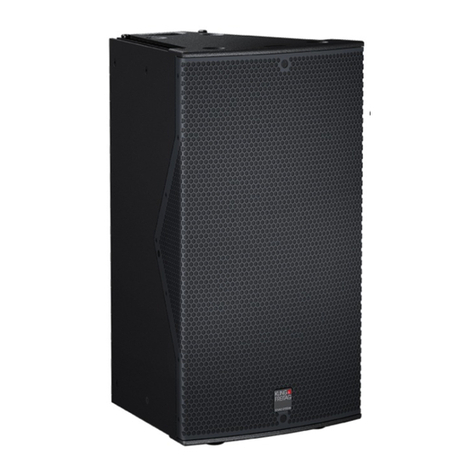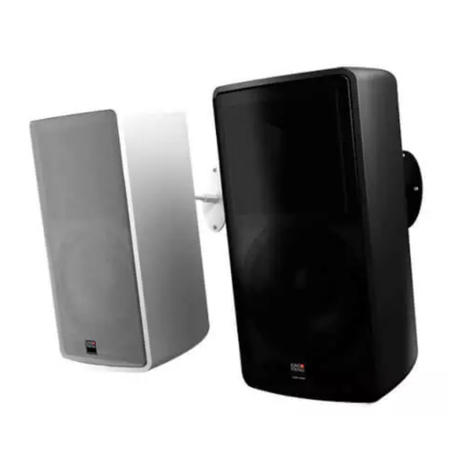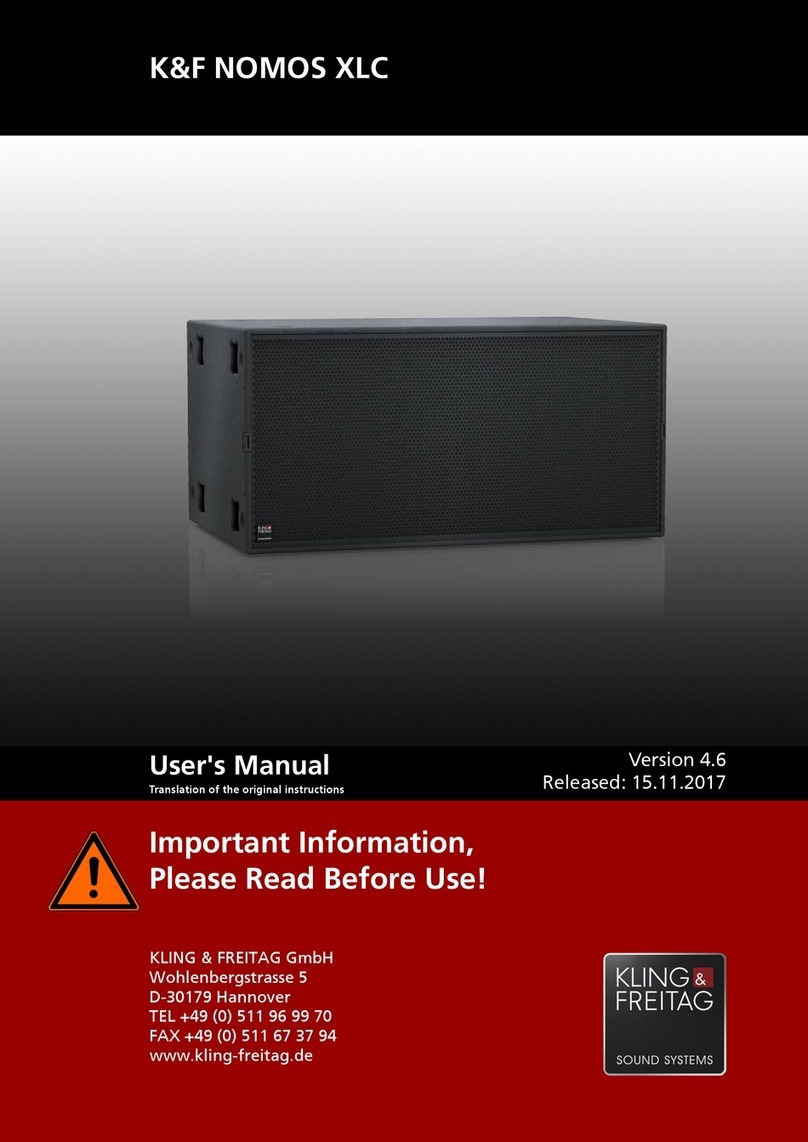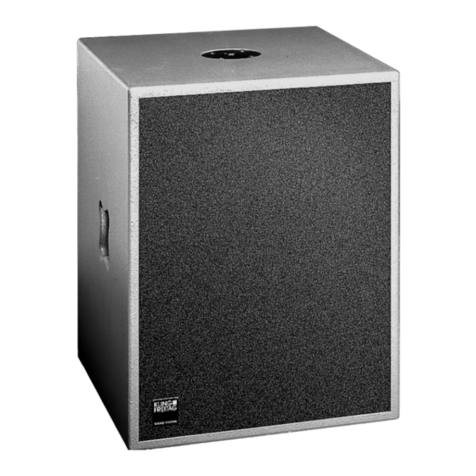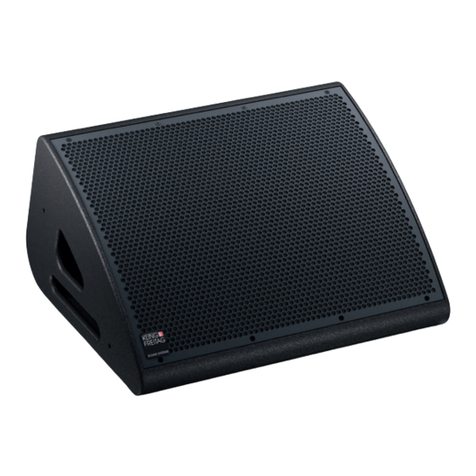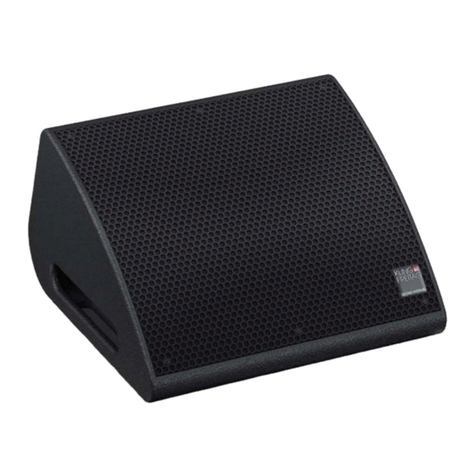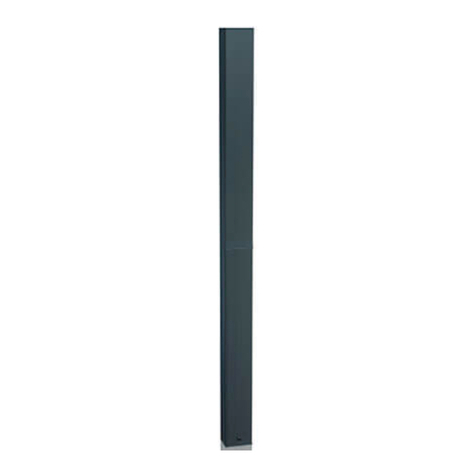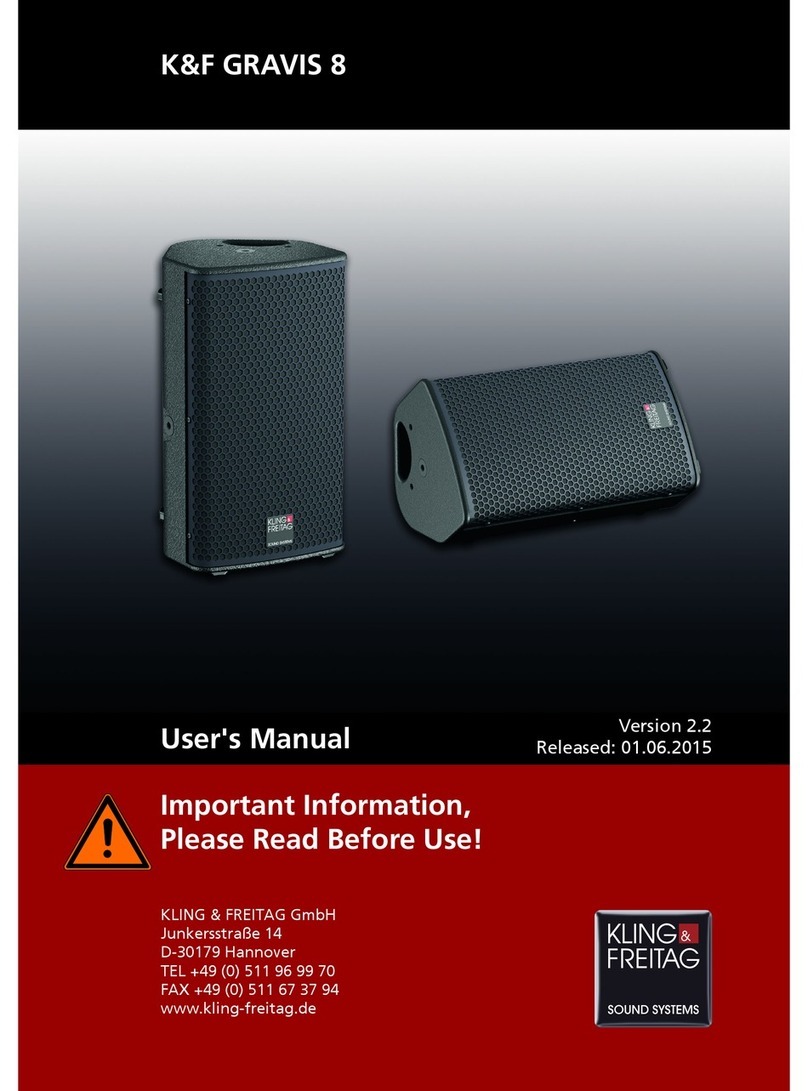
User’s Manual CA 1001
KLING& FREITAG GMBH ©1995-2004Page 5 of 31
1. General Safety Instructions for Using Speakers
Mounting the speakers
To prevent injury, this equipment must be securely placed on the floor or secured to the
wall according to the mounting instructions. Speakers, which are stacked, must be se-
cured with securing straps. Please note that speakers can move as a result of vibrations.
To prevent them from falling from their mounted position, they must be secured prop-
erly.
Speakers may only be suspended by qualified personnel.
Never use signal or power cables for suspending, aligning or securing the systems.
When laying the connecting cables, make sure that nobody can trip.
The speakers must be hung by using at least two of the designated flying points. The
same applies when lifting and aligning the speakers.
Never hang more than two speakers under one another without using the designated
Kling & Freitag mounting devices.
Ensure that all installation connections comply with the applicable safety guidelines and
that the size and strength are sufficient. Further instructions are in our user's manual for
assembly equipment and in the general safety instructions for speakers and assembly
equipment.
For mobile and fixed installations, use only assembly equipment from KLING & FREITAG.
Make sure to observe the included safety and mounting instructions for loudspeakers
and accessories.
Do not install speakers in any of the following places:
−where the speakers are permanently exposed to direct sunlight
−where the speakers are exposed to high moisture
−where the speakers are exposed to strong vibrations and dust.
Damage caused by the speakers' magnetic fields
Speakers are permanently surrounded by a magnetic field, even when they are not op-
erating. Therefore, during transport and placement of the speakers, it is important to
ensure that there is always approx. 1 m between the speakers and magnetic data media
and computer/video monitors.
Protecting the Speakers
When selecting power amplifiers, ensure that they have a sufficient power level. Power
amplifiers with an output level, which is too low, can cause the speakers to overload
(clipping).
Power amplifiers should never be overloaded. When the nominal power of the power
amplifiers is higher than that of the speaker, overload may ruin the speaker.
The input section of a power amplifier may be overloaded without displaying a clipping
signal, e.g. if the headroom of this circuit is too low. We recommend turning the level
controls to the maximum position and to adjust the level before the amplifiers.
The following signals may damage the speakers
−permanent high-pitched signals with high frequency and continuous noise from
feedback
−permanently distorted signals with high power.
−noises, which occur when the amplifier is on while equipment is being connected,
disconnected or switched on.
Preventing hearing damage
To prevent the risk of hearing damage, avoid being too close to operating speakers,
even if the volume level seems to be low enough. In general, volume levels over 90 dB
can cause hearing damage.
Warning
Important
Caution





